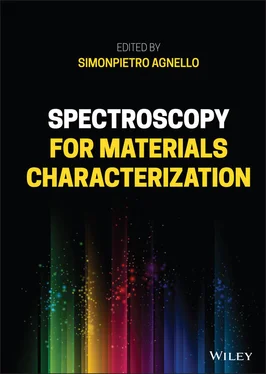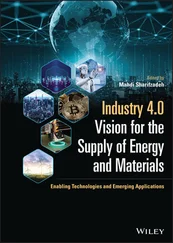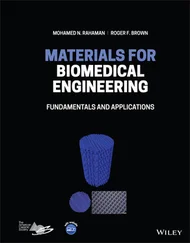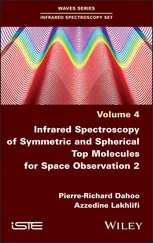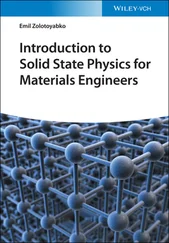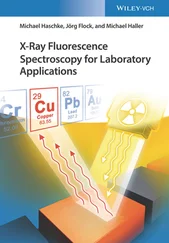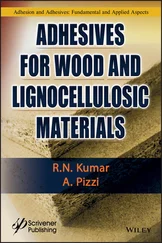Spectroscopy for Materials Characterization
Здесь есть возможность читать онлайн «Spectroscopy for Materials Characterization» — ознакомительный отрывок электронной книги совершенно бесплатно, а после прочтения отрывка купить полную версию. В некоторых случаях можно слушать аудио, скачать через торрент в формате fb2 и присутствует краткое содержание. Жанр: unrecognised, на английском языке. Описание произведения, (предисловие) а так же отзывы посетителей доступны на портале библиотеки ЛибКат.
- Название:Spectroscopy for Materials Characterization
- Автор:
- Жанр:
- Год:неизвестен
- ISBN:нет данных
- Рейтинг книги:5 / 5. Голосов: 1
-
Избранное:Добавить в избранное
- Отзывы:
-
Ваша оценка:
- 100
- 1
- 2
- 3
- 4
- 5
Spectroscopy for Materials Characterization: краткое содержание, описание и аннотация
Предлагаем к чтению аннотацию, описание, краткое содержание или предисловие (зависит от того, что написал сам автор книги «Spectroscopy for Materials Characterization»). Если вы не нашли необходимую информацию о книге — напишите в комментариях, мы постараемся отыскать её.
Learn foundational and advanced spectroscopy techniques from leading researchers in physics, chemistry, surface science, and nanoscience Spectroscopy for Materials Characterization,
Simonpietro Agnello
Spectroscopy for Materials Characterization
Spectroscopy for Materials Characterization — читать онлайн ознакомительный отрывок
Ниже представлен текст книги, разбитый по страницам. Система сохранения места последней прочитанной страницы, позволяет с удобством читать онлайн бесплатно книгу «Spectroscopy for Materials Characterization», без необходимости каждый раз заново искать на чём Вы остановились. Поставьте закладку, и сможете в любой момент перейти на страницу, на которой закончили чтение.
Интервал:
Закладка:
On these grounds, femtosecond time‐resolved Raman (TRR) experiments can be conceived as a powerful probe of excited state dynamics of any photoexcited physical system, overcoming the lack of structural sensitivity typical of absorption and fluorescence spectroscopies. In particular, Raman spectra being characteristic of any given state of the system, one should expect strong changes of the vibrational mode pattern whenever the system transitions to an excited state, and subsequently evolves. Following these changes by TRR can be used to extract detailed information on any structural changes or photochemical processes initiated by photoexcitation.
Broadly speaking, TRR spectroscopy is conceptually similar to TA, except, in this case, the observable becomes the change in the Raman spectrum of the sample between a pumped and unpumped situation [52]. TRR is not the only example of femtosecond‐resolved vibrational spectroscopy. An alternative is provided by mid‐infrared TA experiments, which are the time‐resolved counterpart of infrared absorption experiments [56, 57]. Similar to TRR, infrared TA can also probe the vibrational mode structure, but one advantage of TRR spectroscopy is the exclusive use of visible‐ or near‐infrared‐light pulses, which are easier to generate and detect, especially if broadband pulses are needed. Furthermore, due to the higher energy, visible‐light pulses are inherently shorter in time, ultimately providing better time resolution [51]. Another alternative is given by time‐domain techniques founded on TA, such as impulsive stimulated Raman scattering (ISRC) [58], which works best with low‐frequency modes and generally displays lower signal‐to‐noise ratios than state‐of‐the‐art TRR. For these reasons, TRR is generally recognized as the most powerful approach to achieve vibrational spectroscopy with femtosecond resolution, and will be discussed in detail in the rest of this section.
3.5.2 Typical Experimental Setups
The simplest and most straightforward path to implement a TRR experiment is to use a pump–probe approach very similar to TA experiment, except for the fact that the probe beam is used as a Raman pump. Thus, instead of measuring the change in probe transmittance, which is the basis of TA, one can achieve TRR by collecting the isotropic Raman signal produced by scattering of the delayed probe pulse, and analyzing it in a spectrograph as a function of pump–probe delay [54]. However, this method, named probe‐induced Raman scattering, is made very difficult by the very small cross section of Raman scattering, and also brings inherent limitations in time resolution. In fact, considering the time–energy uncertainty relation, the probe beam used as a Raman pump beam must be relatively broad in time to be narrow enough in the spectral domain. For example, a pulse centered at 550 nm, with a FWHM of 1 nm will guarantee a ω Vspectral resolution of ∼30 cm −1, which may be adequate to probe a Raman spectrum, but with a transform‐limited pulse duration as long as 450 fs. This problem is fundamentally unsurmountable and limits the time resolution to the picosecond range.
In fact, one of the most effective approaches to carry out a TRR experiment is use a more complex scheme, initially proposed at the end of the 1990s [55], based on what is called the stimulated Raman process. The relation between spontaneous and stimulated Raman process is similar to that between spontaneous and stimulated emission: shortly, the Raman scattering cross section into a given photon mode is strongly enhanced whenever that particular mode is already populated by photons provided by a seed beam. Therefore, stimulated Raman process can be used to probe the same properties as spontaneous Raman process, but with potentially much stronger intensity.
In a typical time‐resolved stimulated Raman experiment [5559–61], such as the one depicted in Figure 3.6, three noncollinear laser pulses are used, all obtained by splitting the fundamental beam from the femtosecond laser. The first pulse hitting the sample is the pump , which is resonant with a certain transition of the sample and photoexcites it. To distinguish this pulse from the following two, it is often named actinic or photochemical pump. After that, a combination of two more pulses is used to probe the vibrational mode pattern of the excited system. One acts as Raman pump pulse, long in the time domain, hence narrowband in frequency around ω , as required for spectral resolution; the third pulse, called the Raman probe beam, provides the seed responsible of stimulating the Raman emission. The two pulses are overlapping in time and hit the sample together after a certain delay t from the pump. However, the Raman seed is much shorter in time (<100 fs), hence spectrally broadband and contains nonzero spectral density across a wide interval of ω ′. In these conditions, one observes a strong enhancement of the Raman scattering at ω ′, which can amount to several orders of magnitude. If the Raman probe spectrum is dispersed and measured with and without the Raman pump, one can directly obtain the stimulated Raman spectrum as the gain in the probe, that is the natural logarithm of the ratio: (Probe) Pump on/(Probe) Pump off. Besides, the detection is greatly facilitated by the fact that the stimulated Raman signal is emitted in a defined direction. In fact, femtosecond stimulated Raman spectroscopy allows to acquire high‐quality Raman spectra even in the presence of a strong fluorescence [52, 61].
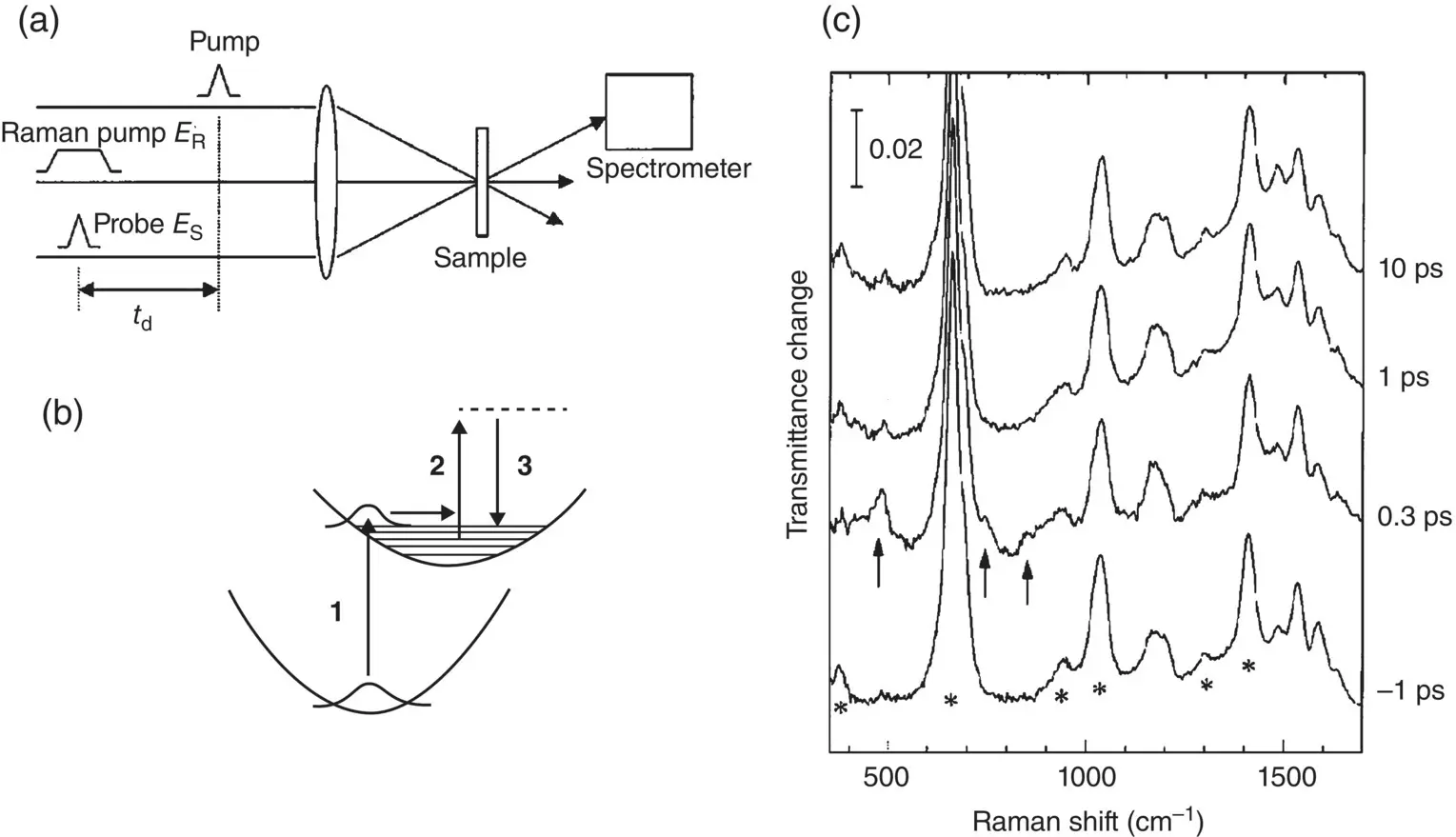
Figure 3.6Panel (a): Scheme of the three‐pulse sequence used in time‐resolved stimulated Raman spectroscopy.
Source: Reprinted with permission from [55]. Copyright (1999) by the American Physical Society.
Panel (b): Energy level diagram for time‐resolved stimulated Raman.
Source: Adapted with permission from McCamant et al. [60]. Copyright (2003) American Chemical Society.
Panel (c): One of the earliest time‐resolved stimulated experiment, probing the trans‐cis photoisomerization dynamics of 4‐(dicyanomethylene)‐2‐methyl‐6‐(4‐dimethylaminostyryl)‐4H‐pyran, dissolved in a 3 mM concentration in DMSO and photoexcited at 397 nm. The Raman pump pulse was tuned at 795 nm (bandwidth 1.5 nm), while the Raman probe pulse, obtained by supercontinuum generation, covered the region 600–1000 nm. Arrows indicate the Raman signals appearing due to the photogenerated transient states, while asterisks indicate the Raman lines of the solvent.
Source: Reprinted figure with permission from Yoshizawa and Kurosawa [55]. Copyright (1999) by the American Physical Society.
What is more important, however, is that the use of this detection approach provides the trick to achieve very high temporal resolution [61]. In fact, despite Raman scattering occurring during the whole duration of the Raman pump pulse (∼1 ps or more), it is only within the duration of the short‐lived Raman probe beam that stimulated Raman process occurs. Therefore, the time resolution of the measurement is now controlled by the femtosecond duration of the probe pulse. For example, a narrowband Raman pump pulse at 560 nm, with duration of several picoseconds, can be combined with a probe pulse centered, say, at 580 nm with a FWHM of 20 nm, which is broad enough to stimulate Raman emission over a relatively wide spectral range (∼1000 cm −1), and can be compressed down to <25 fs.
Summarizing, high spectral resolution and short temporal resolution are simultaneously achieved by decoupling the two problems, so overcoming the Heisenberg limit: the former is controlled by the FWHM of the Raman pump pulse, while the latter depends on the temporal duration of the probe. Often, time‐resolved stimulated Raman is described by the quantity of δtδν used as a figure of merit of the experiment. State‐of‐the art setups have achieved δtδν of the order of 0.5 ps⋅cm −1[52].
Читать дальшеИнтервал:
Закладка:
Похожие книги на «Spectroscopy for Materials Characterization»
Представляем Вашему вниманию похожие книги на «Spectroscopy for Materials Characterization» списком для выбора. Мы отобрали схожую по названию и смыслу литературу в надежде предоставить читателям больше вариантов отыскать новые, интересные, ещё непрочитанные произведения.
Обсуждение, отзывы о книге «Spectroscopy for Materials Characterization» и просто собственные мнения читателей. Оставьте ваши комментарии, напишите, что Вы думаете о произведении, его смысле или главных героях. Укажите что конкретно понравилось, а что нет, и почему Вы так считаете.
